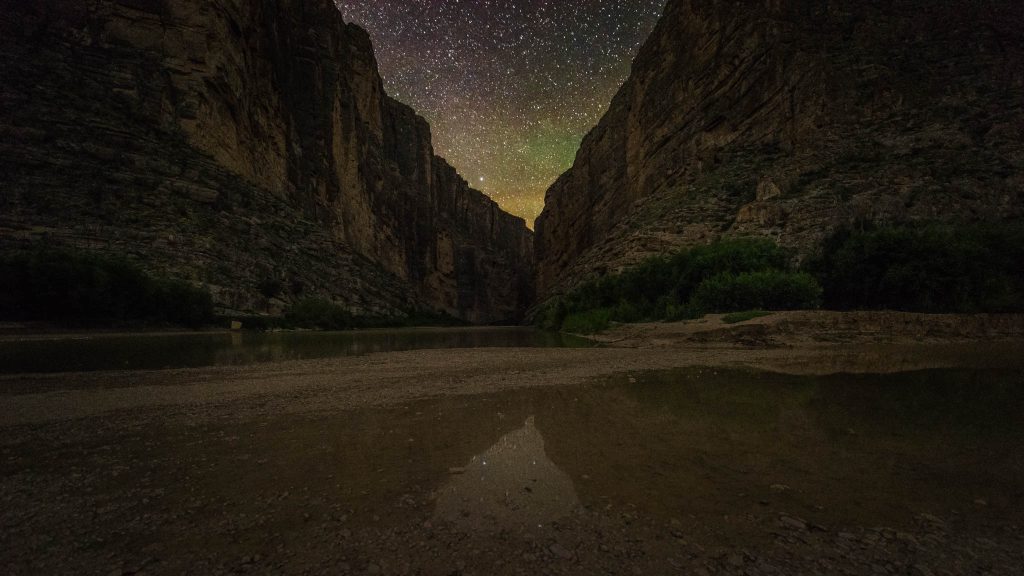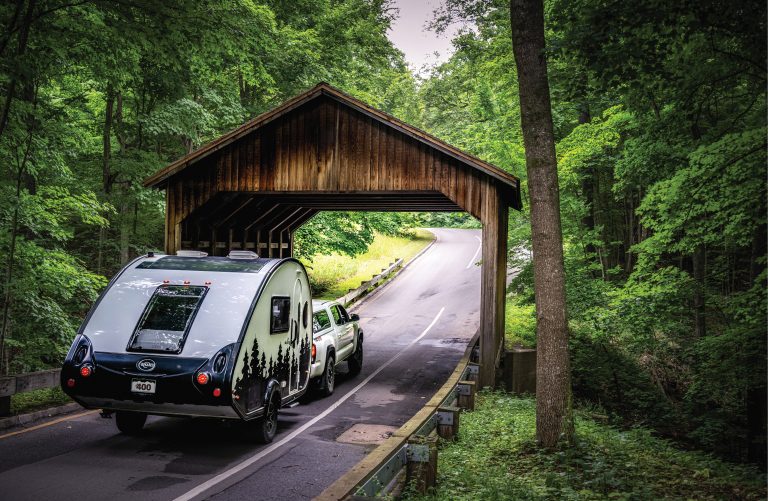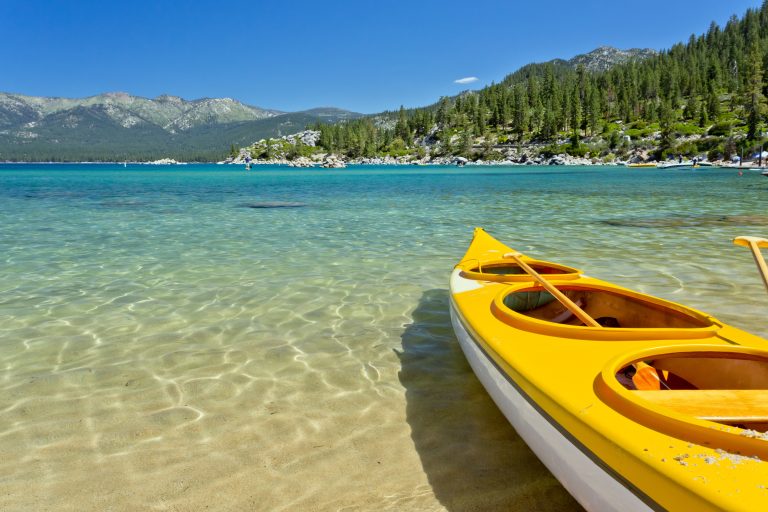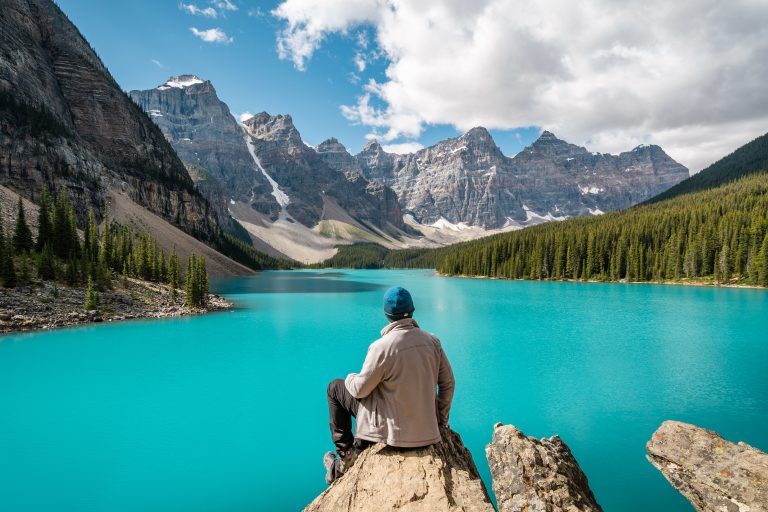While most of your travel destinations are places to enjoy during the daylight hours, you might want to consider some that give the most bang for the buck when the sun goes down — specifically, those sites that are best for stargazing.
Granted, the stars appear every evening, even when the cloud cover obscures them from view. But some locations are better than others since they are less impacted by what the International Dark-Sky Association (IDA) calls “light pollution” (the inappropriate or excessive use of artificial light).
We’ve pulled together a list of seven places that have been rated as the best for stargazing, earning them designations through the International Dark Sky Places conservation program. (You can find a full list on the IDSP interactive map.) For even more stargazing sites, check out the posts on Apartment Therapy, REI Coop, and Attractions of America. And don’t miss one of the many stargazing festivals held throughout the country.
Happy stargazing!

Big Bend National Park, TX
Straddling the Texas-Mexico border in the heart of the Chihuahuan Desert, Big Bend is the 15th largest in the national park system and is known for its rich biological and geological diversity, cultural history, and recreational resources. It’s also an International Dark Sky Park, and with the inclusion of the Chinati Mountains State Natural Area (CMSNA) into its existing IDSP designation, it’s one of the largest areas of protected night sky in the United States.
Big Bend has free, regularly scheduled night sky interpretive programs held by Park Rangers and volunteers. Or enjoy the DIY version: grab your binoculars and a lawn chair and enjoy the celestial show.
Central Idaho Dark Sky Reserve, ID
In 2079, the Central Idaho Dark Sky Reserve was named the nation’s first dark sky reserve by the International Dark-Sky Association — one of only 20 international dark sky reserves in the world — and also received the IDA’s “Gold Tier” status, the highest ranking of the quality of the night sky.
What makes it so ideal in terms of stargazing? Oddly, the lack of development and visitor services also makes it the ideal “off-grid” experience: no electricity or mobile phone service across its more than a thousand square miles, according to IDA. The lack of artificial light makes it one of the last places of natural nighttime darkness in the U.S., which has led to a growing astrotourism industry for visitors who want to see the heavens. The lack of light pollution means you won’t even need binoculars or a telescope to view Milky Way Galaxy and planets.

Cherry Springs State Park, PA
Cherry Springs has several qualities that make it a must-go place for stargazing. The first is the elevation of Astronomy Field, situated at the 2,300-foot-high mountain that offers an excellent 360-degree view of the night sky. The second is its location: 41.6501 degrees north and 77.8164 degrees west, which allows for ideal viewing of the nucleus of the Milky Way Galaxy. And then there is the minimal light pollution, due as much to the surrounding undeveloped state forest as to the shielded lighting in the park with all white light converted to red.
So it’s no wonder that the International Dark-Sky Association named it a Dark Sky Park. The park has three areas for stargazing: the Night Sky Public Viewing Area (for short-term viewing), the Rustic Campground (for overnight stargazing for casual stargazers), and the Overnight Astronomy Observation Field (for overnight viewing for serious stargazers with equipment).

Glacier National Park, MT
Glacier National Park has much to offer visitors: melting glaciers, alpine meadows, carved valleys, and spectacular lakes. And for stargazers, the Park, together with its sister park, Waterton Lakes National Park of Canada, has been certified as an International Dark Sky Park by the International Dark Sky Association (IDA)—the first IDA-certified international transboundary Dark Sky Park.
This isn’t the first time the two Parks have achieved certification. The Waterton-Glacier International Peace Park was created in 1932, and in 1995, the Waterton-Glacier International Peace Park World Heritage Site was established. The Dark Sky Park certification requires that both parks make a long-term commitment to preserving dark skies, protecting nocturnal habitats, and ensuring public enjoyment of the night sky and its heritage, among other obligations. The Park has several astronomy programs during the summer, with sophisticated telescopes available for participants, as well as Ranger-led activities.
Beverly Shores, IN
It may only have a population of just 690 (according to the 2020 census), but the residents of Beverly Shores take light pollution seriously, which is how this small city earned the designation of an International Dark Sky Community from the International Dark-Sky Association (IDA) in 2014. Adjacent to the Indiana Dunes, the city implemented several strategic initiatives, including retrofitting residential and commercial light fixtures and educating property owners about the importance of protecting the nighttime environment.
Visits to nearby Indiana Dunes National Park offer stargazing opportunities at Kemil Beach, one of the darkest spots along Lake Michigan’s south shore. Close by is the Thomas Conway Observatory in Lowell, IN—home to the Calumet Astronomical Society, Inc., which makes the Observatory open to the public on monthly Open House nights, and Challenger Learning Center of Northwest Indiana in Hammond, IN, housing two mission simulators, a planetarium, and a multipurpose science room. And don’t miss Singing Sands Stargaze at Indiana Dunes State Park—an annual event with local astronomers from the Calumet Astronomical Society.
Newport State Park, WI
If you’re visiting Newport State Park, you will find 30 miles of hiking trails and the chance to do some backpack camping in the Park’s 2,300 acres of forest. And if you like to stargaze, you’re in luck since it’s also an International Dark-Sky Association-designated Dark Sky Park. Located at the far end of the Door Peninsula, Newport State Park provides excellent nighttime viewing and an unobstructed view of the eastern horizon, thanks to a community effort to IDA-compliant lighting projects and community education and outreach emphasizing the importance of reducing light pollution to protect local wildlife.
The Newport Wilderness Society has tips for making the most of your stargazing experience at the park as well as a downloadable brochure with more information.
Antelope Island State Park, UT
Antelope Island State Park has it all: spectacular views of lake and island scenery, opportunities to hike, bike or horseback ride, year-round interpretive opportunities, and a chance to birdwatch and see its natural inhabitants such as free-ranging bison, mule deer, bighorn sheep, and, of course, antelopes.
And due to its situation as an island and protected land, it’s free of the kind of developments that bring light pollution, which is how it earned its destination as a Dark Sky Park in 2017 from the International Dark-Sky Association. The Park has a variety of night-time activities, including astronomy programs and Star Parties in partnership with the Ogden Astronomical Society. You can also download the Antelope Island Dark Sky Brochure for locations and tips for the best stargazing experience.
2 responses to “Top Places for the Best Stargazing Experience”
Recent Articles






Changed my outside T@B light to red and added a red LED strip on it’s own switch inside next to the original accent lighting. Use them when I’m in a dark sky park and when using a telescope so I don’t destroy my night vision. Red is also good for buggy areas as it doesn’t attract the little critters to the windows and door as much as white.
What a great idea! Happy stargazing!